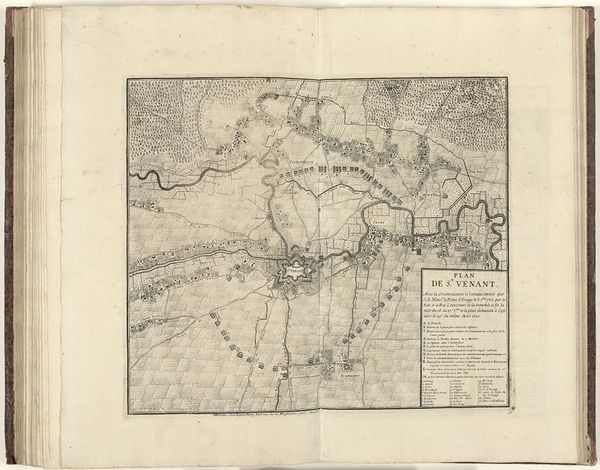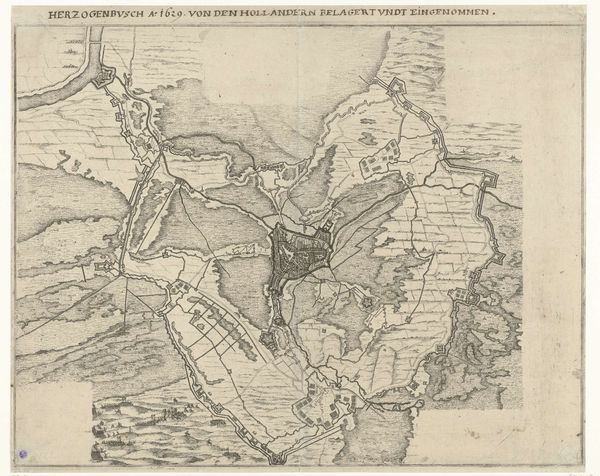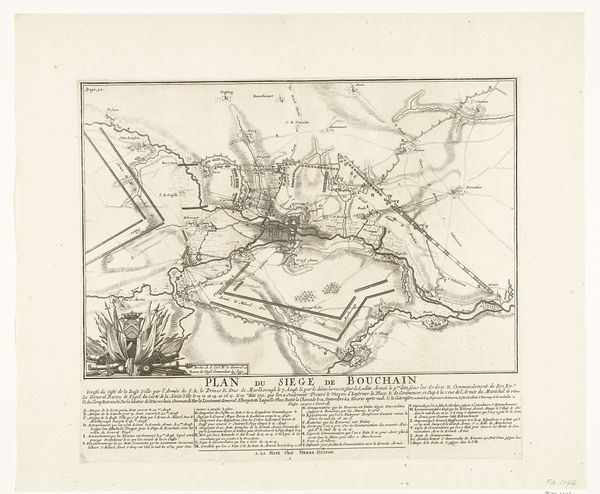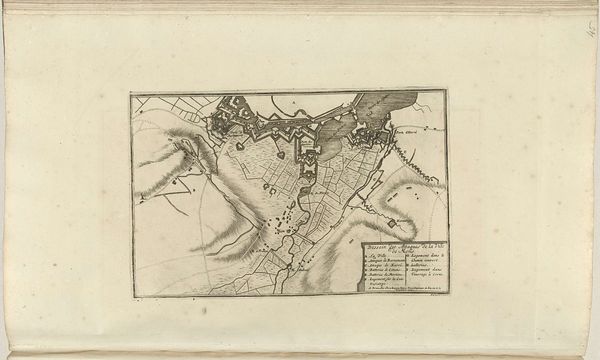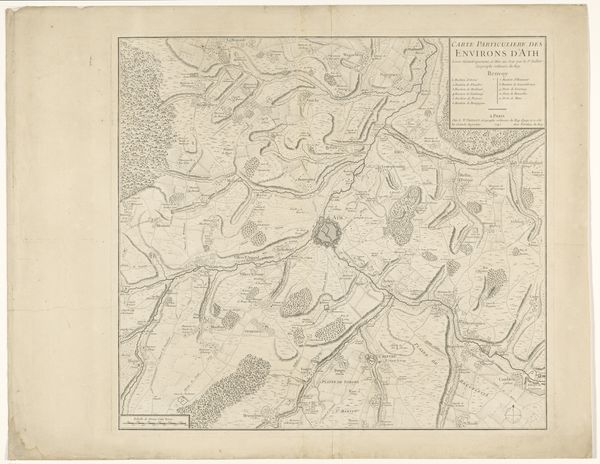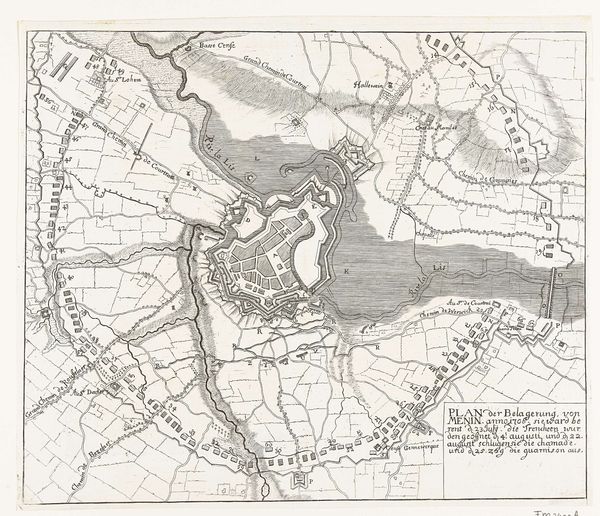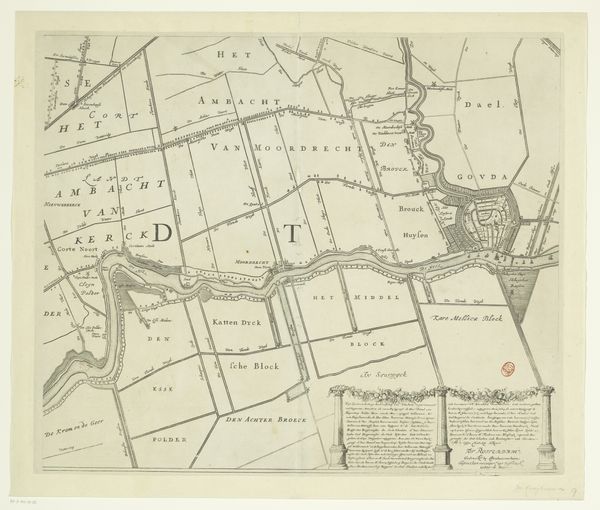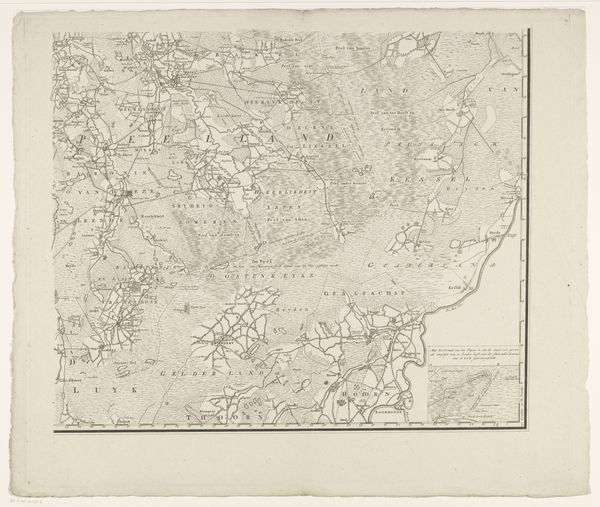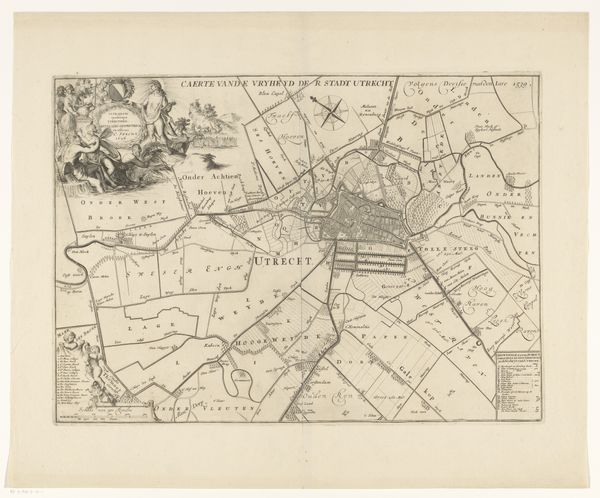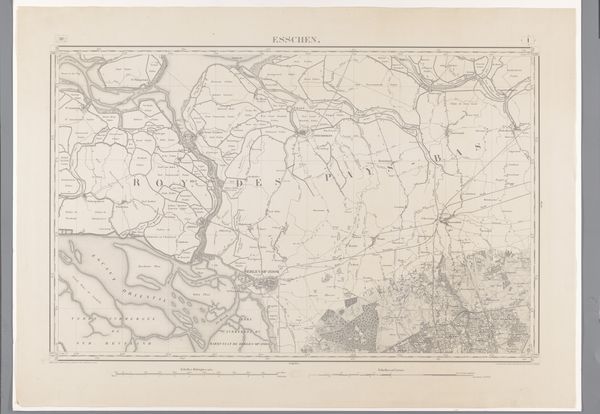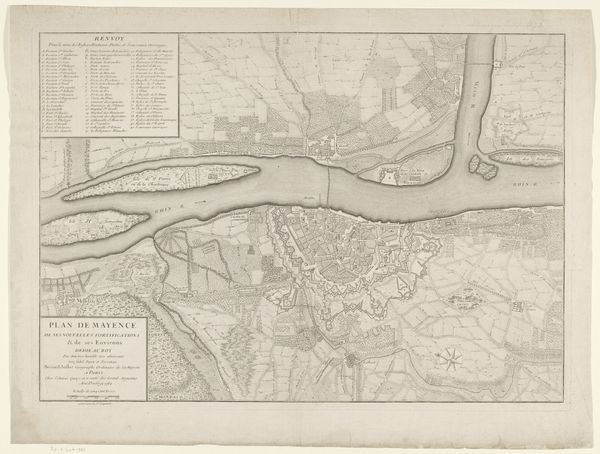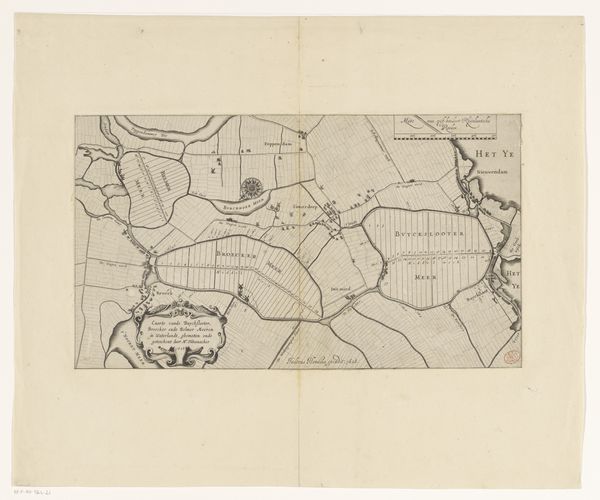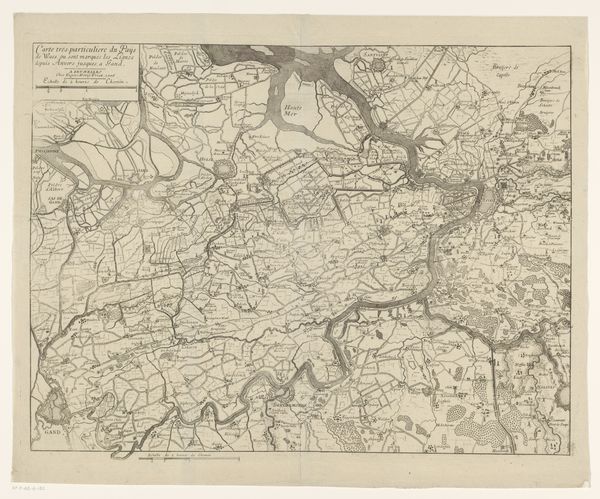
print, engraving
#
baroque
# print
#
landscape
#
history-painting
#
engraving
Dimensions: height 551 mm, width 602 mm
Copyright: Rijks Museum: Open Domain
Editor: This is a print from 1706 entitled "Kaart van het beleg van Menen, 1706" by Jacobus Harrewijn, held at the Rijksmuseum. It's a very detailed engraving showing the siege of a town. I’m immediately drawn to the intricate lines and how they create a sense of depth and distance, especially the textures of land versus the water surrounding it. What strikes you when you look at this piece? Curator: What is immediately apparent is the organization of the pictorial space. Observe the almost mathematical precision with which Harrewijn delineates the town's fortifications, and how this contrasts against a rural backdrop, achieved through a variation in line weight. How does the work’s stark contrast and ordered, structured lines guide our eye? Editor: The dark lines of the fortification around Menen immediately focus my eye. Then my eye moves towards the different landscape textures in softer grey and brown and then away, almost like it is pushing my eye away. The different values really make it three-dimensional. Curator: Precisely. Semiotically, we might also interpret the varying thickness of the lines as establishing a visual hierarchy. This highlights not just depth but strategic and military importance, the solid, decisive marks signifying fortifications while finer lines render the surrounding land as merely supplemental. Editor: That's interesting, I hadn't thought about how the line weights contribute to the narrative itself, but it definitely makes sense. So even though it's a map, it’s more than just informational. It tells a story visually through its composition, use of line and values. Curator: Precisely. It serves as both a representation of geographic space and a statement on power, control, and the meticulous organization required in matters of military planning, underscoring the potent capacity of cartography. Editor: I’ve learned so much from this discussion. Thank you for guiding me to look closely. I am starting to look beyond just the topic matter in my analyses. Curator: My pleasure. Always remember that form is content. This analytic method can be a profound guide when studying artworks in general.
Comments
No comments
Be the first to comment and join the conversation on the ultimate creative platform.
